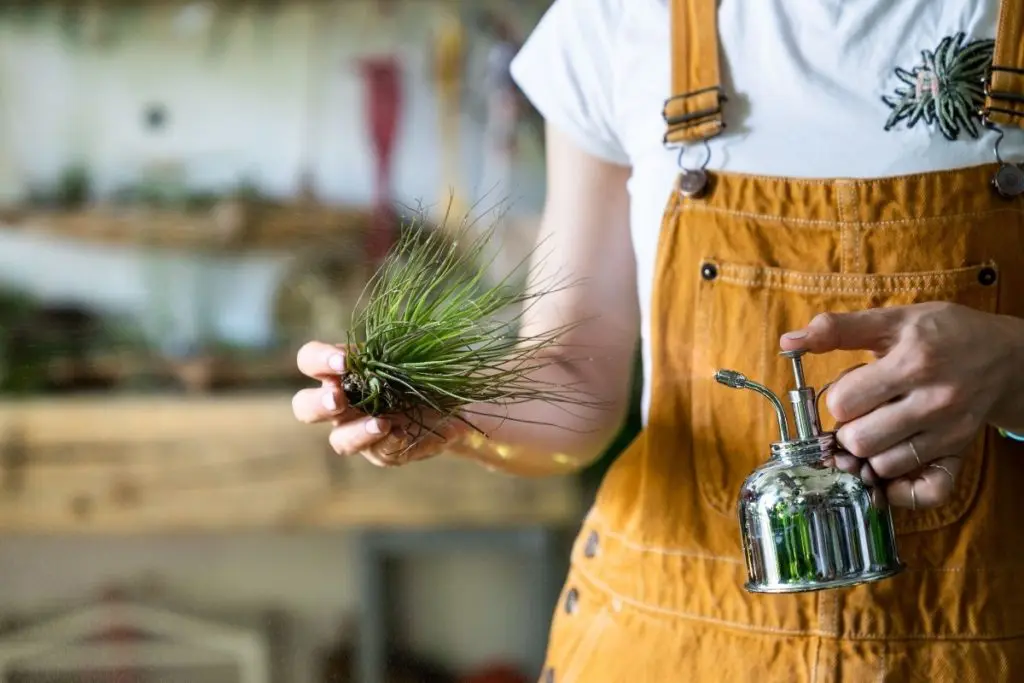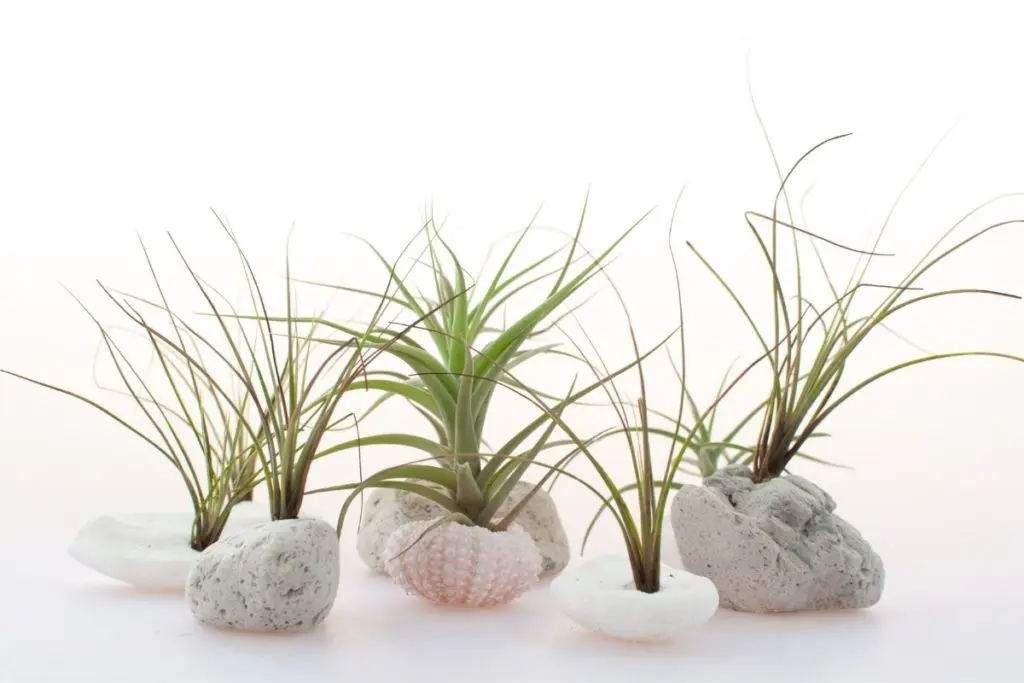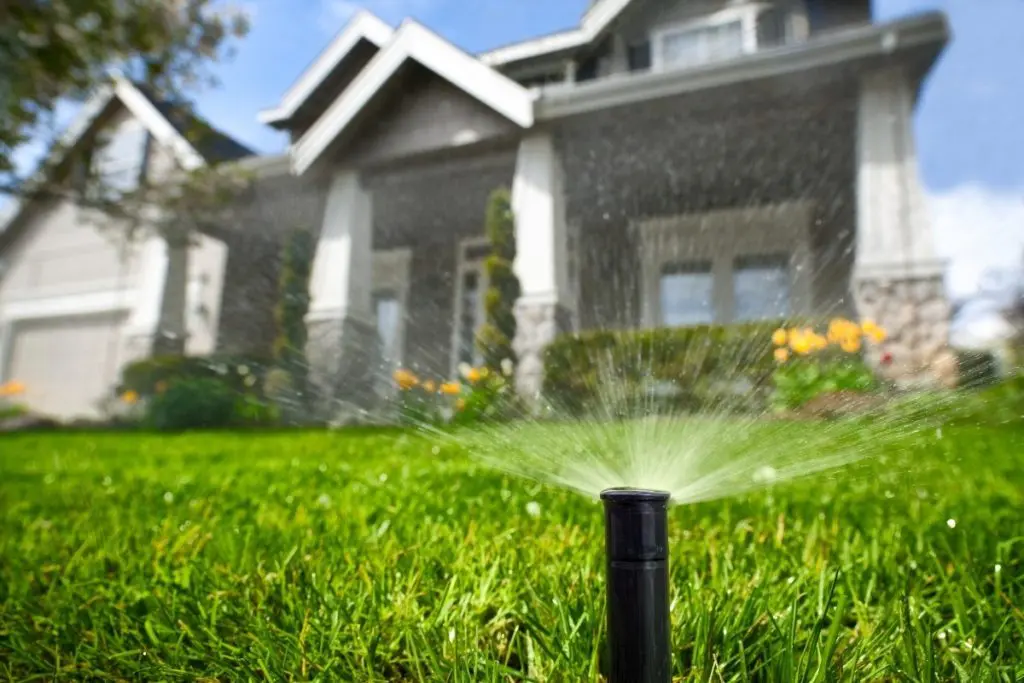Air plants are all the rage, and it’s easy to see why: they’re endlessly charming and effortless to care for. They’re also very different from other plants in that they require no soil at all. Instead of absorbing nutrients through their roots, Tillandsia gather water through the tiny silvery-white scales on their leaves, which are called trichomes.
There are well over 450 different types of air plants. Some are tiny and fuzzy, while others are larger and more dramatic, with curly leaves.
No matter which type of air plant you choose, you’ll need to know how to take care of it. This article will give you all the necessary knowledge for how to care for air plants indoors.
How to Take Care of Air Plants: The Essential Steps
Follow these tips, and your air plant is sure to thrive.
1
Good Lighting and Air Flow
Tillandsia love light and will thrive in any bright spot in your home. But there’s always the possibility of too much of a good thing — be careful that you don’t put your air plant in full sun, as direct light will likely burn them.
Ideally, try to find a spot somewhere near a window for your air plant. A good rule of thumb is to stay within about 10 feet of a window. Any further away than 10 feet and they may begin to struggle (though some varieties can do okay in low light, or even in fluorescent office lighting).
One way to tell if your air plant is getting enough light is to watch for blooming. If yours stays relatively colorless and doesn’t bloom over the course of 6 months, it likely needs to be closer to light or have access to more hours of daylight each day.
Tillandsia also need lots of fresh air. They won’t be content in an environment where there isn’t ample air flow, or occasional exposure to outdoor air. This includes enclosed displays. Make sure that if you’re using a glass terrarium to showcase your air plant, it has at least one large opening to allow for good airflow.
In addition to watering your air plant, consider periodically giving them an “air bath.” Sounds fancy, but this simply means cracking a window or opening a door near your plants once in a while for a nice cross breeze. You can even take them for field trips outside for a few hours if the weather is mild (just make sure they stay out of direct sun).
2
Regular Watering

As we’ve learned, Tillandsia are different from most plants: instead of absorbing water and nutrients through roots, they have trichomes — tiny silvery scales that gather water from their leaves. So learning how to care for air plants is different, too. Air plants get their sustenance from being periodically submerged in water.
You may have heard that you should mist your air plants. Misting is great for in-between soaking sessions or supplementally for when the weather is drier. However, misting should not be substituted for a once-a-week dunking — it’s just not enough water for your plants to absorb.
How often and how long you soak your air plants will depend on different factors, like your climate, the current season, and where they’re positioned in your house. For example, an air plant in a sunny spot in a breezy hallway will likely require more extensive soaking than an air plant living in a small, humid bathroom.
How to Water Air Plants
Here’s how to give your air plant a hydrating bath:
1. Always use lukewarm or room temperature water. If the water’s too hot or cold, this can shock your air plants.
2. Use filtered water. Don’t use tap water, as it can contain chlorine or other impurities that might compromise the health of your air plant. Also, avoid distilled water, as it doesn’t contain any nutrients for your plants and can actually kill them over time. Filtered water works well, but if you can collect rainwater, even better — your air plants will love this rich source of micronutrients.
3. Dunk ’em. As a general rule of thumb, most air plants should get a submerged soak about once a week, for about 20 mins to an hour (or longer, if you think your plant needs it). When you buy your air plant, make sure to note any recommendations for watering frequency.
4. Fully submerge your air plants. Ensure that each plant gets a deep soak — you may have to gently push your plant under a few times to cover its whole surface area effectively (if your plant is blooming, keep the flower above the water to help it last longer).
5. After watering, dry your air plants VERY thoroughly. This is the most important thing to remember when caring for air plants. After they’ve had their bath, it’s crucial that they dry out thoroughly before you put them back into their terrarium or perch. Any extra moisture left on leaves or in crannies can lead to rotting, which is the air plant’s mortal enemy. So how do you keep your air plants alive instead?
6. Gently shake off any excess water and lie your plants on their sides, on top of an absorbent towel. They can sometimes take up to 4 hours to dry, so be prepared to give them the time they need. You can also bring your Tillandsia out to an airy porch or a shaded patio where they can dry more efficiently in the breeze. You can tell if they’re dry enough by gently squeezing the very base of the plant with dry fingers. If you can’t feel any moisture, they should be ready to go.
3
Periodic Trimming

Like most plants, Tillandsia can benefit from an occasional trim. Since air plants get their water and nutrients through their leaves, why do they sometimes grow roots, too? In the wild, they use their roots to cling onto things, like tree bark, rocks, or moss. But the air plants that live inside your home have no need for any roots, so it’s best to trim them off, right at the base. If your air plant is reproducing, it will send out even more auxiliary roots, which can often spike outwards in all directions. It’s OK to trim these spiky roots off of your plant as well.
You will also probably see some dead or dried leaves forming on the sides and bottom of your air plant. Go ahead and pick off these brittle leaves as they appear. Some varieties produce more dried leaves than others; but don’t worry, shedding is totally normal!
If you accidentally gave your air plant too much water, or didn’t dry it off completely after watering, you also might find a rotten spot. If you come across one: pinch off the area or the mushy leaf as best you can to prevent the rot from spreading.
4
Propagating — i.e., Making Babies
As if air plants weren’t already cute enough, get ready for this: they also regularly produce baby air plants. And their babies are called “pups.” I mean…
Following an air plant’s bloom cycle, small nodes (pups) should begin to form at its base. Most species of air plants take approximately 6 months to several years to bloom, and will generally produce 3 to 8 pups.
When this occurs, continue care as usual, until the pups reach about one third to one half the size of their “mother.” At this point, you can begin harvesting your pups! Using a very sharp scissors or kitchen knife, carefully snip the pup off at its base. Allow the cut to dry out for a few days before displaying or watering either plant. After that, you’ll have a new air plant, ready for display.
You can also leave these new little babies intact if you’d like. If you don’t remove the pups, your air plant will form a larger ball or cluster. Some people like the aesthetic of one or the other, so it’s really up to you!
How to Care for Air Plants FAQ’s

How long do air plants live?
The good news is that most air plants live for several years if cared for properly. The bad news is air plants will only flower once during their lifetime. Then they will eventually die off after blooming. But this won’t happen before they produce more pups for you to continue to enjoy for years to come!
What about fertilizer?
Air plants are pretty low maintenance, and don’t necessarily require fertilizer. However, if you’re interested in boosting their blooms or giving them a little extra support, then you certainly can fertilize them. Just use a formula specifically formulated for air plants or Bromeliads, and don’t use more than recommended.
Can I keep my air plants outside?
Most definitely. Your plant will likely need more frequent watering than one kept indoors, and you’ll need to make sure that it never gets waterlogged or soggy. Besides those considerations, make sure to follow all the same rules as growing Tillandsia indoors: water regularly, dry thoroughly, and keep in an indirectly sunny spot, away from temperatures below 50 degrees or above 90 degrees.
What if I go on vacation and can’t water my air plants for a while?
If you plan to be away longer than a week, simply soak your Tillandsia for about 12 hours before you leave, and then again when you return home. Planning ahead like this means you can go longer distances between watering if needed.
Further Reading






